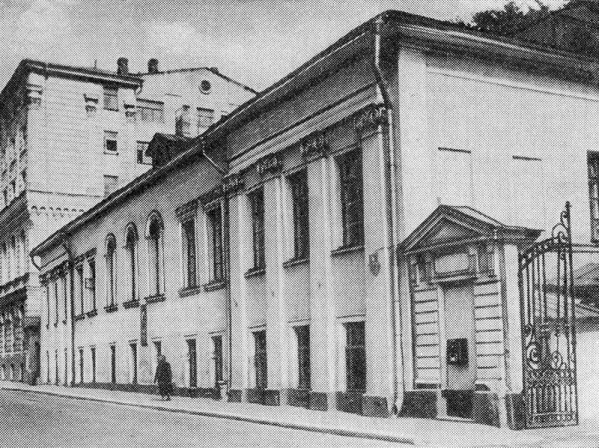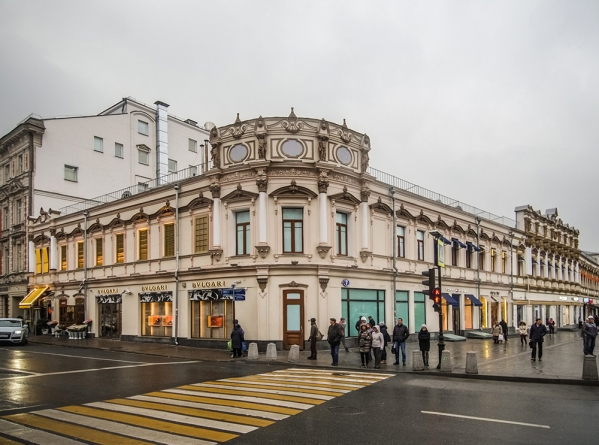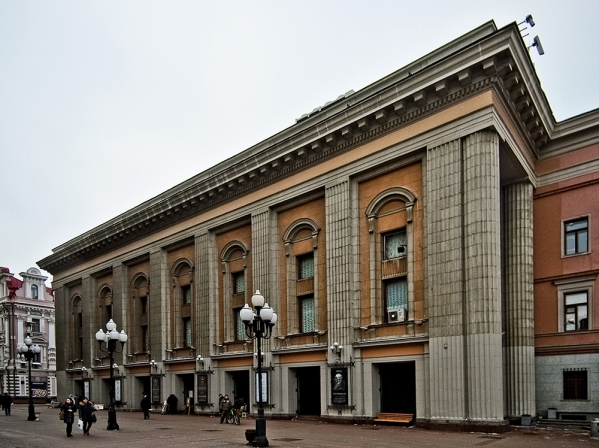The address of Konstantin Stanislavsky
6 Leontyevsky Lane
Subway station «Mayakovskaya»
In this house, Konstantin Stanislavsky, founder of the Moscow Art Theatre (MKHAT), lived from 1921 to 1938. In September 1925, Bulgakov was invited to his house to read the play, The Days of the Turbins. Bulgakov depicted this event ironically in Theatrical Novel – in the scene with the first reading of Ivan Vasilevich. From 1938 (until 1993), the lane was called K. Stanislavsky lane.
Bulgakov’s partially published novel, The White Guard, drew MKHAT’s attention and in April 1925, its dramatisation was proposed to the writer. At the end of August, Bulgakov received a note from the director of the I. Sudakov Moscow Art Theatre: ‘Tomorrow, Sunday, 3pm. You should read the play to K. Stanislavsky at his flat. Leontevsky Lane, house 6’. The dramatisation of the play seemed drawn out to the renowned director, and the author went off to put the finishing touches on it. In October 1925, the Commissar of Education, Lunacharsky, gave the play a negative review. Nonetheless, in January 1926, the actors began rehearsals. However, controversies raged around the play – it was approved, then forbidden and then approved once again. In May, the writer’s home was searched, and in September, the play, The Days of the Turbins, was banned and the author was summoned for interrogation at the OGPU (the secret police). After the full dress rehearsal (with members of the government in attendance), the play was finally permitted and on 5th October 1926, the long-awaited premier took place. The show had an explosive effect. Even three years later, it was still provoking strong emotions. D. Shostakovich saw the show in 1928 and wrote to his friend, ‘In The Days of the Turbins, there are instances of pure tragedy – loud weeping could even be heard in the theatre.






